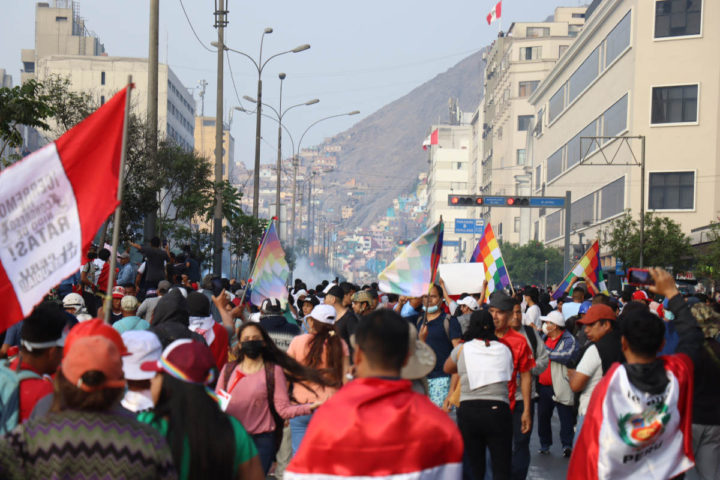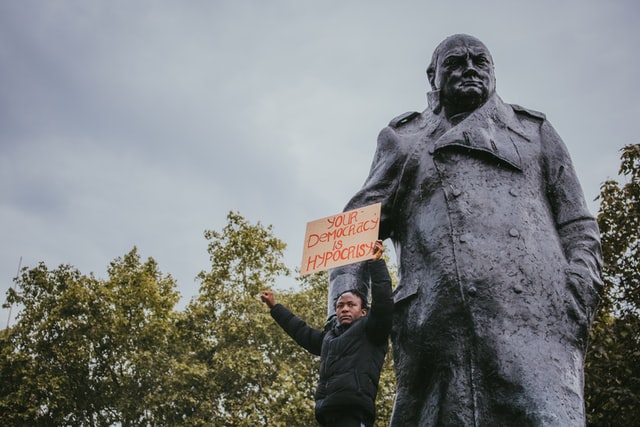The sound of gunshots on Saturday afternoon disrupted the atmosphere at Donald Trump’s campaign rally, causing shock and panic among the crowd and across the United States. The incident has raised urgent questions: What does this assassination attempt mean for American democracy? What does it say about the political system that allows such violent acts to occur? The attack is a stark reflection of the deep tensions and divisions in the U.S. and global politics and how these differences threaten to widen.
The first idea is that the recurrence of such events throughout history demonstrates that the U.S. has a violent political tradition. Moreover, before the shooting at the Pennsylvania rally, a Reuters/Ipsos poll revealed that political violence was at its highest level since the January 6 attack on the U.S. Capitol. The poll identified 213 incidents, with two-thirds involving physical assaults and confrontations and the remaining third primarily consisting of property damage. Notably, of the 76 individual acts of violence, 18 resulted in fatalities.
It’s difficult to overlook the ongoing spats from both sides, particularly after Donald Trump contested the 2022 elections and supported the Capitol riot. The former president has been a controversial figure, often encouraging violence against his opponents. Consequently, it is hard to forget the list of speeches, social media posts, policies, and interviews in which he defends his confrontational populism at all costs. In that sense, ironically, the unfortunate shooting in Pennsylvania has also been the result of his policies, including that regarding the right to bear arms.
However, that may not be the only reading of what is already being labeled as an assassination attempt on Trump.
Seconds after the incident, theories emerged about who, how, and why it had happened. Among these, some speculated that the Deep State or the Democratic administration, including the Secret Service, orchestrated the plot to eliminate the former president. Concurrently, other comments and theories have already proclaimed Trump as the inevitable victor of the 2024 election, portraying him as a resurrected figure, triumphant and unblemished.
Unfortunately, the volume of information we are exposed to today, the complexity of the events we observe, and the communicational void from bubble to bubble cause us to lose our relationship and our fundamental connection with the discourses that allow our life in the community. In that sense, to the accumulation of false reactions and messages is added the image of a bloodied Trump with his fist raised, muttering “fight,” “fight.” As psychology professor Roger J. Kreuz commented, “It was an image, and a gesture, destined for the history books.”
People, exposed to the speed of the moment, economic stress, and poor technological-digital literacy, prefer to trust an easy narrative that organizes all these elements into what is closest to us: the natural drama of life, the competition of the forces of nature, good versus evil, the resurrection of Jesus, the birth of the hero as an essential figure in the spiritual life of a nation, among other myths.
The moment also reminded me of Alain Badiou, in a text called The Joint Disappearances of Man and God, which tells us that neither the grand narratives of the final battle between humanist democracy and religion nor the ideological simplifications of the clash of civilizations can hide the true drama of our time, the search for a path towards political and social emancipation in a post-ideological world.
Authoritarianism and the phenomena that gravitate around it, with their false promise of order and security, are nothing more than a reflection of our collective inability to imagine and build alternatives to chaos and inequality. They are nothing more than comforting stories, oral narratives that seek to fill a void of meaning only a system has provoked and incentivized: the current world order based on techno-capitalism.
Nor do I think, as CNN and other television networks have advocated, that the shooting in Pennsylvania is a mere wake-up call that will make the American people reflect that they must unite in the face of tragedy. There are indications that this is a much deeper and global process.
What if we look at the violent logic inherent in the current system in more everyday examples? Only in the U.S. more than 120 people die by gunfire, and shootings injure more than 200 daily. Firearms are the leading cause of death among American children and teenagers, with almost 2,600 children and teenagers dying each year from gun-related homicides. Recently, in Chicago alone, 109 people were victims of shootings, with 19 dead, during the long holiday weekend of the last July 4.
This internalization of violence is compounded by the violence of war, as evidenced by the two examples that are almost daily headlines: the NATO-Russia war in Ukraine and the genocide against the Palestinian people. All this and other examples I do not mention for brevity speak not of a president, country, pseudo-theoretical conspiracies, and comforting mythical narratives but of a system in crisis that demands an imminent collective resolution.
It is easy to think and blame the Secret Service for being in combination with the Democratic administration if what is sought is simply a victory for Trump in November. Or to condemn the violence solely on Trump’s Republican supporters for their daily campaigns against the current administration. It is also easy to think that Trump already has the election in the bag. Yes, myths move people. However, the campaign is months away, and ultimately, the issue itself is not even who wins the election. In the end, the game is between two similar choices, and as many have said, the U.S. is stuck voting between false choices: a pathological liar and a person who is no longer fit for office.
I therefore propose to put the Trump and Biden issues in brackets. If you like, I propose to think of them only as part of a larger set of forces. That is to say, it is not just an act or a crime; it is more about events that extend throughout our lives because political violence is only an expression of systemic violence and a regime of social death.
There is an intrinsic relationship between the Trump assassination attempt and NATO’s support for military campaigns in other parts of the world, just as there is a connection between Putin’s efforts to silence the opposition in Russia and the ongoing war against Kyiv. These connections, to cite just two examples, illustrate a broader pattern: violence that manifests itself in dramatic and visible acts, such as assassination attempts and military conflicts, is a reflection of deeper, systemic violence embedded in the world order. This systemic violence perpetuates a cycle in which internal political struggles and external military aggressions feed each other, reinforcing an order based on conflict and domination. In essence, these small, shocking, and rapid events are not isolated incidents but rather symptoms of an entrenched system that thrives on violence and discord on a planetary scale.
In fact, as K. Marx demonstrated in Das Kapital, the origin of capitalism depends on a primitive (or original) accumulation of capital that is only possible with the constant, daily, and routine sacrifice of the subject. That is the first act of violence we must consider: the “divorcing” of “the producer from the means of production.” Clearly, this occurs today in many forms and under various circumstances. Nevertheless, it is ultimately the defining feature of the current world order: the perpetuation of violence rather than cooperation between individuals. To grasp this point, we must prioritize a transversal anti-systemic logic that dismantles contemporary political discourse, insufficiently based on artificial Left and Right divisions that do little or leave little to understand.
However, I must be honest. Another silent bullet has been tearing through the wind for decades and centuries, which has already broken our ability to think critically and act collectively.
In this sense, the challenge we face as a society is twofold: on the one hand, to unravel and understand the logics that sustain authoritarianism and similar manifestations, and on the other hand, to actively commit ourselves to the construction of spaces for dialogue, criticism, and political action to overcome divisions and face common challenges with solidarity and a vision for the future. Only in this way can we aspire to a human community where power serves everyone, not just a few, and political violence ceases to be the common language in and between human groups.




